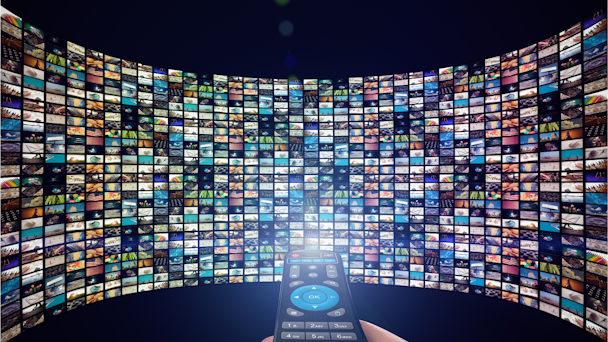Streaming TV: cable déjà vu all over again
Want a simple explanation of the complex connected TV landscape? Media Kitchen’s Julia Smaldone offers a topline tour of where we were, where we are and where we are going amid the changing TV landscape.

Remember the magic of cable TV? It was a one-stop shop where consumers could access hundreds of channels: premium, kids programming, pay-per-view and live sports. If you liked shows on different networks, like Grey’s Anatomy and The Office or were a fan of both the NFL and the Premier League, you could easily watch whatever content you wanted just by changing the channel. There was no logging in and out, no remembering different passwords (or your friend’s password) and no juggling multiple subscriptions and bills.
It all used to be so simple — and not just for consumers. For media buyers, there was no alphabet soup of CTV, OTT, streaming services and devices that today’s buyers have to grapple with when planning.
So how did we end up with a system that’s confusing and frustrating for consumers and advertisers alike?
The answer, ironically, is that cable TV grew too complicated and streaming was meant to be a step towards simplification.
As the number of cable and content providers grew, so did confusion over different bundles. Consumers got frustrated and saw their bills steadily increase, so they cut the cord.
The return of fragmentation
Enter the streaming services. Netflix reimagined its DVD rental service into the original streaming platform, and people loved it. There was lots of quality, bingeable content with no ads and a low monthly cost.
Then things got more complex. Netflix was joined by Amazon, Hulu, Disney+ and Apple+. Cable channel stalwarts joined the streaming party, including CBS All Access, NBC Peacock, Sundance and HBO Max. Just recently, Discovery joined the party with Discovery+.
Those channels began grabbing their older historical shows back from Netflix and other original streamers and placed them on their own streaming channels, available for an extra $6 to $10 per month. At the same time, streaming platforms developed original content of their own that left consumers straddling multiple subscriptions.
And then, bundles returned. The ’Disney Bundle’ of Disney+, Hulu and ESPN+. NBC with Peacock, NBC Gold (Sports) and Apple has announced Apple One, its own bundle. These bundles sound more and more like cable packages. And consumers can no longer cut the cord to cut costs.
Streaming services were supposed to be the simplified, cost-effective answer to complicated cable TV bundles. But the entertainment industry has proven itself to be ruthlessly competitive.
Media buyers must compartmentalize
This fragmentation extends to media buyers as well. On the surface, the multitude of connected TV offerings and partners in the space can feel like a point of frustration for media buyers. However, it is an opportunity.
Media companies will do well to stay well-informed and up to date on the CTV landscape, even if clients are not actively buying there just yet. It’s important to recognize where the best opportunities are for targeting vs. measurement vs. quality inventory are, so agencies can be a resource for sifting through the web and identifying the strongest solutions for their clients.
The best way for media buyers to think about CTV is to compartmentalize the offerings in the same way we would bucket different types of clients. CTV, and its fragmented landscape, has the power to deliver on goals up and down the funnel, and a deep understanding of the full landscape will equip media buyers with the tools they need to put together the strongest and most actionable plans.
Keep an eye on the horizon
What we’ve learned is that there’s no such thing as cutting the cord anymore. We live in a digitally focused, connected society. If we try and simply do away with pieces of the digital ecosystem that inconvenience us, they will just evolve and find their way back into our lives some other way.
This new and evolving ecosystem of streaming services is unique in that there is no one-size-fits-all solution for consumers or marketers. For consumers, the menu of options, while overwhelming, is also exciting when you think about the wealth of content, both legacy and original, at our disposal. And for marketers, the power that comes with a well-rounded understanding of the CTV landscape is invaluable in creating tailored and effective solutions for brands. On both sides, the best we can do is embrace the fact that change and progress in this space is inevitable.
The future of CTV may bring an evolution of movie releases to small screens, revamped advertising solutions, and most likely a demand from consumers for some kind of streamlined approach. Whether or not, and when, these developments come is still a mystery. The one thing we can be sure of, however, is that something new will always be on the horizon.
Julia Smaldone is senior strategist at Media Kitchen
